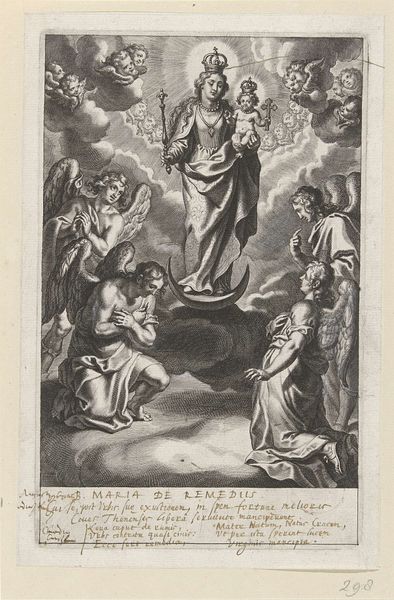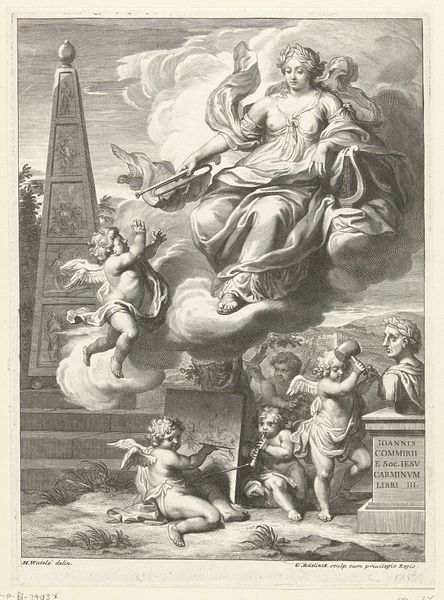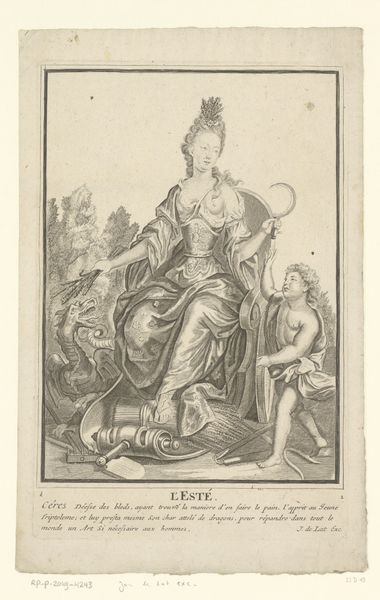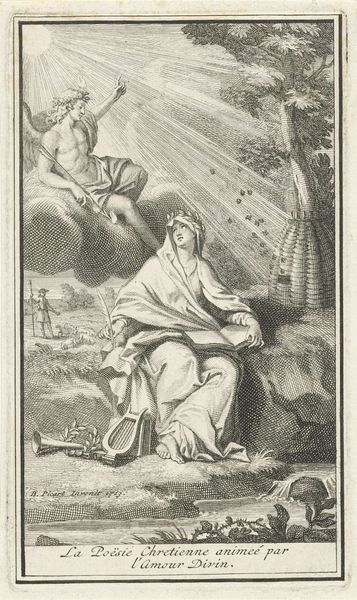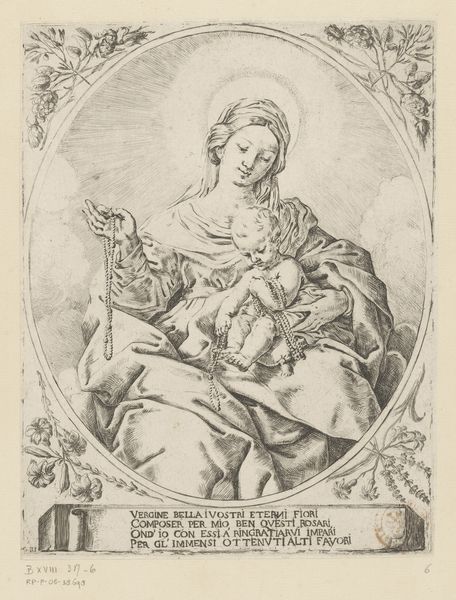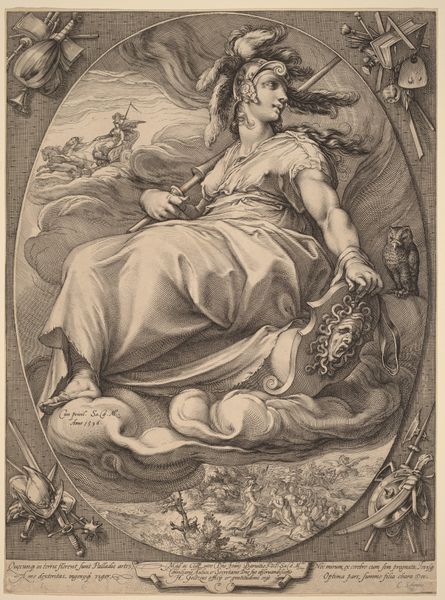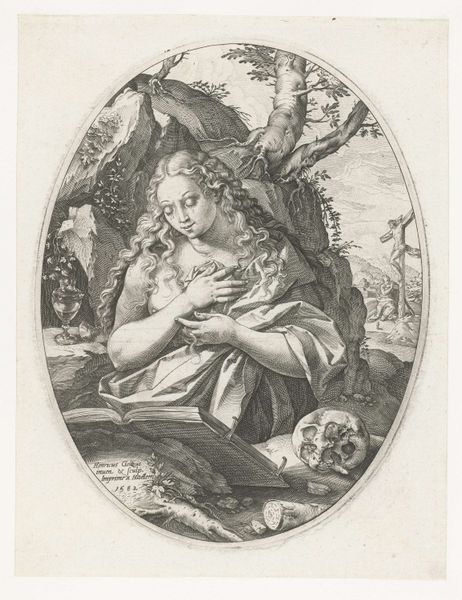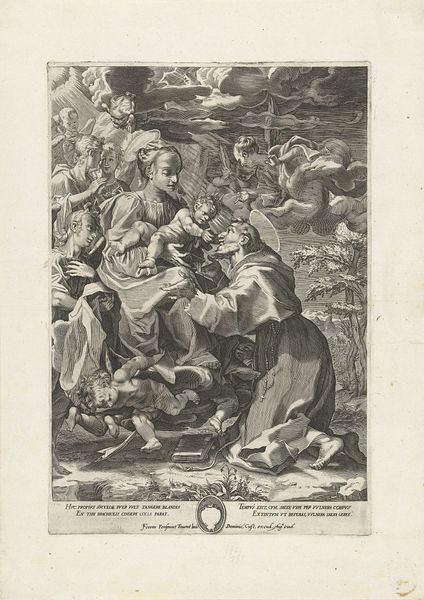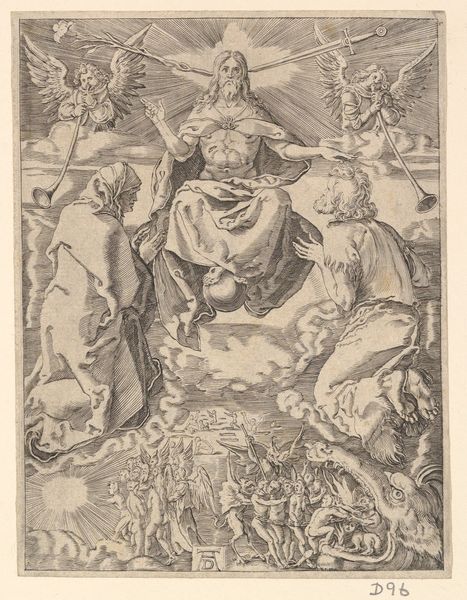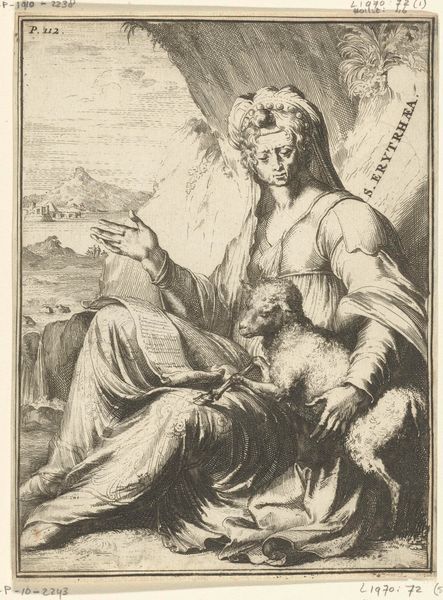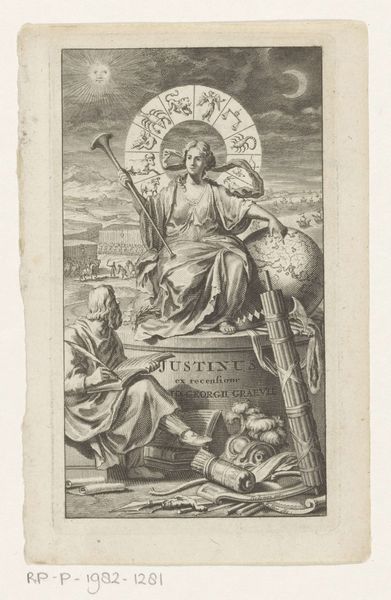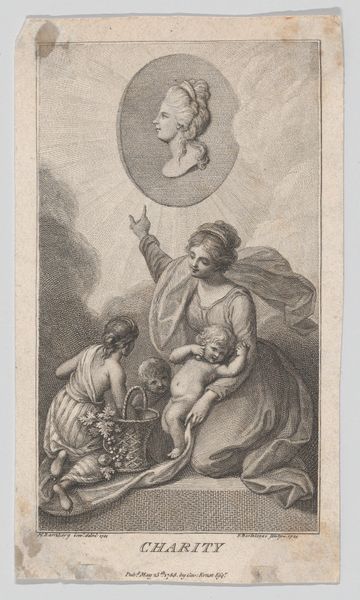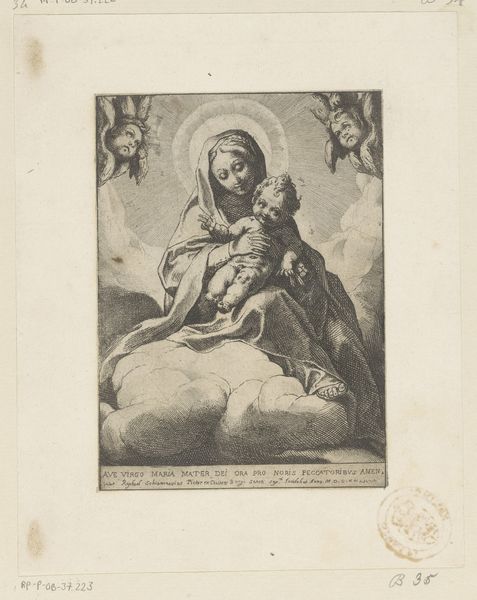
print, engraving
#
portrait
# print
#
figuration
#
northern-renaissance
#
engraving
Dimensions: height 295 mm, width 194 mm
Copyright: Rijks Museum: Open Domain
Editor: Here we have Jacob Matham's "Maria met Kind op de maansikkel," an engraving from 1607. It's a very serene image, Mary seated on a crescent moon surrounded by cherubs. What stands out to you in this piece? Curator: The image immediately places the Madonna within a celestial hierarchy, typical of the Counter-Reformation’s Marian devotion. But it’s worth asking: whose devotion are we looking at? Consider the politics of image-making at the time. How might Matham's representation serve the agendas of power, both religious and secular? Editor: I hadn't considered that angle. It feels very... devotional, in a straightforward way. Curator: Exactly. And that 'straightforwardness' is precisely what needs unpacking. The Madonna is not merely a figure of religious reverence but also a symbol, a tool. How does this image enforce or challenge prevailing gender roles by portraying Mary as both powerful and subservient? Is the vulnerability of motherhood present in her demure affect? Editor: I see what you mean. There’s a tension between her divine status and her earthly role as a mother. Curator: The gaze directs the reading. We must remember the patrons and audience for whom such engravings were produced. They circulated ideas, and power. The stars around her head are more than celestial decorations. How might they reinforce her status compared to others in her earthly roles? Editor: This has definitely changed my initial perception of the artwork. It’s much more complex than I originally thought. Curator: Precisely. The political dimensions are always there. Art serves and critiques the cultural landscape. Editor: I will think twice about how an artist can work both within and against these cultural and political landscapes, portraying the status quo while sometimes contesting its premises.
Comments
No comments
Be the first to comment and join the conversation on the ultimate creative platform.
